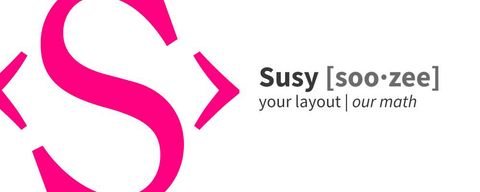The web is littered with grid systems and ‘frameworks’ that force your
code & design into narrowly defined patterns. Even the most semantic of
us have had to push specialized techniques in order to create a usable
syntax.
But Sass has come a long way, and I’m convinced that it’s time for
something new.
What if you had a layout system that bends completely to the needs of
your site? What if you could use one unified syntax for handling
responsive layouts of any kind? What if you had a modular system that
let you mix-and-match to customize for every site, and change your
output with simple extensions?
Susy Next (A Merger)
I’m excited to announce Susy Next, a joint project from the creators of
Singularity, Salsa, Breakpoint, and Susy. We’ll be working
together to design and build a unified layout system under the Susy
name.
Please welcome the Susy Next team:
- Jina [@jina] is a Product Designer at Do, a regular
speaker at web conferences, co-creator of the 320 and Up
responsive design boilerplate, curator of Art in My Coffee, and an
active part of Team Sass Design.
- Scott Kellum [@scottkellum] is a designer at VOX Media. He
created Singularity for managing asymmetric grids, as well as
Sassy Math, Modular Scale, and more.
- Rachel Nabors [@rachelnabors] is a front-ender & UI lead at
Ruzuku an award-winning comicker, developer, Susy contributor, and
a regular speaker at web conferences.
- Danny Palmer [@dannyprose] is an interactive creative and
cross-media art director. He has helped create & maintain the Susy
docs for the past year. He is also the creator of
Middleman-HTML5BP-HAML, a project template using HTML5
Boilerplate, HAML, Sprockets, Susy, and more.
- Sam Richard [@snugug] is a Senior Front End Developer for
NBCUniversal, an organizer for various Sass & RWD meetups in New
York City, and a co-maintainer of Breakpoint, Sassy Math,
Singularity, and so on.
- Tsachi Shlidor [@shlidor] is a Drupalist front-end developer
and themer. He created the Sasson Drupal theme, and the Salsa
layout system.
- Mason Wendell [@codingdesigner] is a Creative Director at
Zivtech, the creator of Breakpoint (simple sass media queries),
and a contributor to various other great projects.
All of us are passionate designer/developers, with a love for Sass &
CSS. We’re excited to build a layout syntax that spans existing
frameworks, techniques, and systems. We hope you’ll get involved, and
help make it a community project. Stay tuned!



